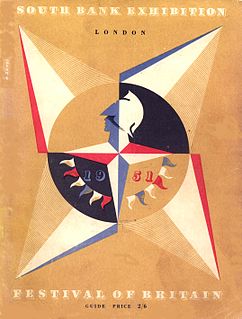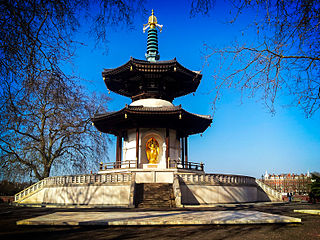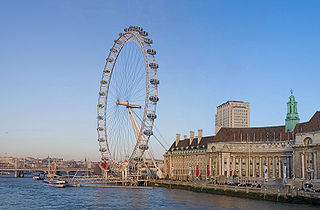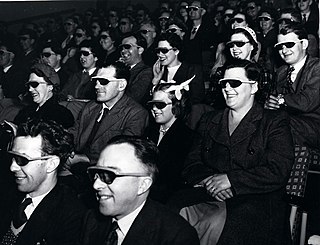 W
WThe Festival of Britain was a national exhibition and fair that reached millions of visitors throughout the United Kingdom in the summer of 1951. Historian Kenneth O. Morgan says the Festival was a "triumphant success" during which people:flocked to the South Bank site, to wander around the Dome of Discovery, gaze at the Skylon, and generally enjoy a festival of national celebration. Up and down the land, lesser festivals enlisted much civic and voluntary enthusiasm. A people curbed by years of total war and half-crushed by austerity and gloom, showed that it had not lost the capacity for enjoying itself....Above all, the Festival made a spectacular setting as a showpiece for the inventiveness and genius of British scientists and technologists.
 W
WBattersea Park is a 200-acre (83-hectare) green space at Battersea in the London Borough of Wandsworth in London. It is situated on the south bank of the River Thames opposite Chelsea and was opened in 1858.
 W
WBattersea Park is a 200-acre (83-hectare) green space at Battersea in the London Borough of Wandsworth in London. It is situated on the south bank of the River Thames opposite Chelsea and was opened in 1858.
 W
WHenry Thomas Cadbury-Brown RA was an English architect. He was educated at the Architecture Association where he was influenced by the architecture of Le Corbusier and Walter Gropius. After graduating he worked for architect Ernő Goldfinger and became his lifelong friend. He went on to set up his own successful practice.
 W
WContrapuntal Forms is a stone sculpture by Barbara Hepworth, one of her first public commissions, made in 1950–51 for the Festival of Britain and installed outside the Dome of Discovery on South Bank, London. It was one of two Hepworth commissions for the festival: the other was an abstract rotating sculpture, Turning Forms.
 W
WThe Dome of Discovery was a temporary exhibition building designed by architect Ralph Tubbs for the Festival of Britain celebrations which took place on London's South Bank in 1951, alongside the River Thames. The consulting engineers were Freeman Fox & Partners, in particular Oleg Kerensky and Gilbert Roberts.
 W
WThe Festival Star was the graphic symbol designed by Abram Games for the 1951 Festival of Britain. Games was one of 12 artists invited to submit designs to the Arts Council and the Council of Industrial Design in 1948, and won the limited competition. The brief requested a design reflecting a "summer of gaiety and good looks"
 W
WThe Happy Family is a 1952 British comedy film directed by Muriel Box and starring Stanley Holloway, Kathleen Harrison and Naunton Wayne. The plot of the film centres on resistance by a family to the disruption caused by the construction of the Festival of Britain. It is also known in the U.S. by the alternative title Mr. Lord Says No. It was an adaptation of a play The Happy Family by Michael Clayton Hutton.
 W
WThe Nimrod, built in the United Kingdom by Ferranti for the 1951 Festival of Britain, was an early computer custom-built to play Nim, inspired by the earlier Nimatron. The twelve-by-nine-by-five-foot (3.7-by-2.7-by-1.5-metre) computer, designed by John Makepeace Bennett and built by engineer Raymond Stuart-Williams, allowed exhibition attendees to play a game of Nim against an artificial intelligence. The player pressed buttons on a raised panel corresponding with lights on the machine to select their moves, and the Nimrod moved afterward, with its calculations represented by more lights. The speed of the Nimrod's calculations could be reduced to allow the presenter to demonstrate exactly what the computer was doing, with more lights showing the state of the calculations. The Nimrod was intended to demonstrate Ferranti's computer design and programming skills rather than to entertain, though Festival attendees were more interested in playing the game than the logic behind it. After its initial exhibition in May, the Nimrod was shown for three weeks in October 1951 at the Berlin Industrial Show before being dismantled.
 W
WThe Royal Festival Hall is a 2,700-seat concert, dance and talks venue within Southbank Centre in London. It is situated on the South Bank of the River Thames, not far from Hungerford Bridge, in the London Borough of Lambeth. It is a Grade I listed building, the first post-war building to become so protected. The London Philharmonic Orchestra, the Philharmonia Orchestra and the Orchestra of the Age of Enlightenment are resident in the hall.
 W
WThe Shot Tower at the Lambeth Lead Works was a shot tower that stood on the South Bank of the River Thames in London, England, between Waterloo Bridge and Hungerford Bridge, on the site of what is now the Queen Elizabeth Hall. It was a prominent landmark on the river and featured in a number of paintings, including by J. M. W. Turner.
 W
WThe Skylon was a futuristic-looking, slender, vertical, cigar-shaped steel tensegrity structure located by the Thames in London, that gave the illusion of 'floating' above the ground, built in 1951 for the Festival of Britain.
 W
WSouth Bank is an entertainment and commercial district in central London, next to the River Thames opposite the City of Westminster. It forms a narrow strip of riverside land within the London Borough of Lambeth and the London Borough of Southwark,. As such, South Bank may be regarded as somewhat akin to the riverside part of an area known previously as Lambeth Marsh and North Lambeth.
 W
WThe Sunbathers, originally titled “Sunbathing Group” is a sculpture by Hungarian artist Peter Laszlo Peri, made for the Festival of Britain in 1951. After the Festival closed, the sculpture disappeared and it was presumed to be lost. After being rediscovered in 2016, the restored sculpture was initially put on display in the Royal Festival Hall on the South Bank, before being put on display in London Waterloo, a major railway termini in 2020.
 W
WThe Telecinema was a small cinema built specially for the Festival of Britain's London South Bank Exhibition in the summer of 1951. It was situated between Waterloo station and the Royal Festival Hall.